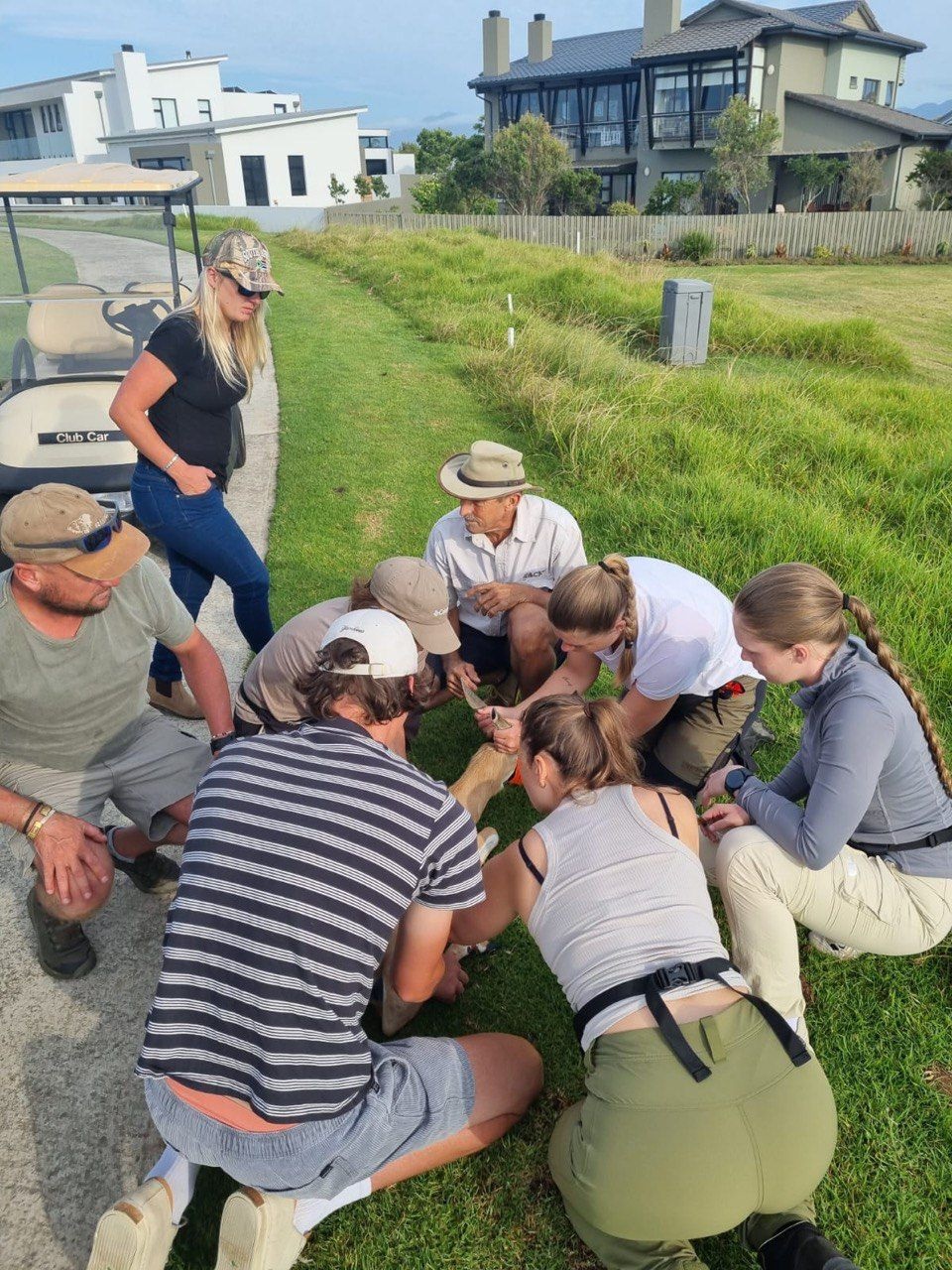GEORGE NEWS - Eight springbuck from a herd living at Oubaai Golf Estate were captured last week to be relocated to a farm in the Klein-Karoo valley.
The animals were darted by wildlife veterinarian from Botlierskop, Dr Willem Burger. The relocation was successful and the springbuck were released at their new home in the Oudtshoorn area.
The herd was introduced by the community of Oubaai and their well-being was overseen by the late Cassie de Bruin. When he passed away, his wife, Helen, continued with this task.
The buck graze on the fairways and in between the fynbos on the golf course.
"We have to keep their numbers down as there are no natural predators, so we capture and relocate once or twice a year. CapeNature issues a permit for the relocation that is usually to a larger private game reserve in the Western Cape,” says De Bruin.
 Dr Willem Burger with one of the springbuck in a transportation box.
Dr Willem Burger with one of the springbuck in a transportation box.
A group of veterinary students from Denmark, who are currently doing a practical course at Legacy Wildlife Services near Mossel Bay, assisted with the two captures, one done on Tuesday 30 January and the second on Thursday 1 February.
De Bruin says they usually capture the young rams out of the herd and occasionally some ewes. The older breeding ram is kept as he is a good specimen of springbuck.
“We let the junior rams go because it is not ideal to have another ram around, and there is not enough space for a younger ram to move away with his own females.
"The ones born in the last year or year and a half chase one another and we cannot have that on the golf course.”
After selecting the rams, they choose from the ewes. Two older matriarchs will also not be relocated as they keep the herd calm. “My husband and I raised one of them and she would still eat from my hand.”
 Everyone lends a hand.
Everyone lends a hand.
De Bruin says the buck are all pretty tame. During the capture, she gets into a golf cart with Burger, who has the dart gun, and three or four other helpers get into another cart.
After a buck is darted, it would still move around for a while, but eventually lies down. “We mask the buck and just before it has to get into the transportation box, the antidote is administered. At that point, it is still drowsy, but is able to stand up and move.”
For the students, this was an opportunity to learn wildlife translocation. At Legacy Wildlife Services, they are also taught on different capture methods, wildlife care and rehabilitation.
 The students from Denmark with Helen de Bruin (far right).
The students from Denmark with Helen de Bruin (far right).
‘We bring you the latest Garden Route, Hessequa, Karoo news’
















